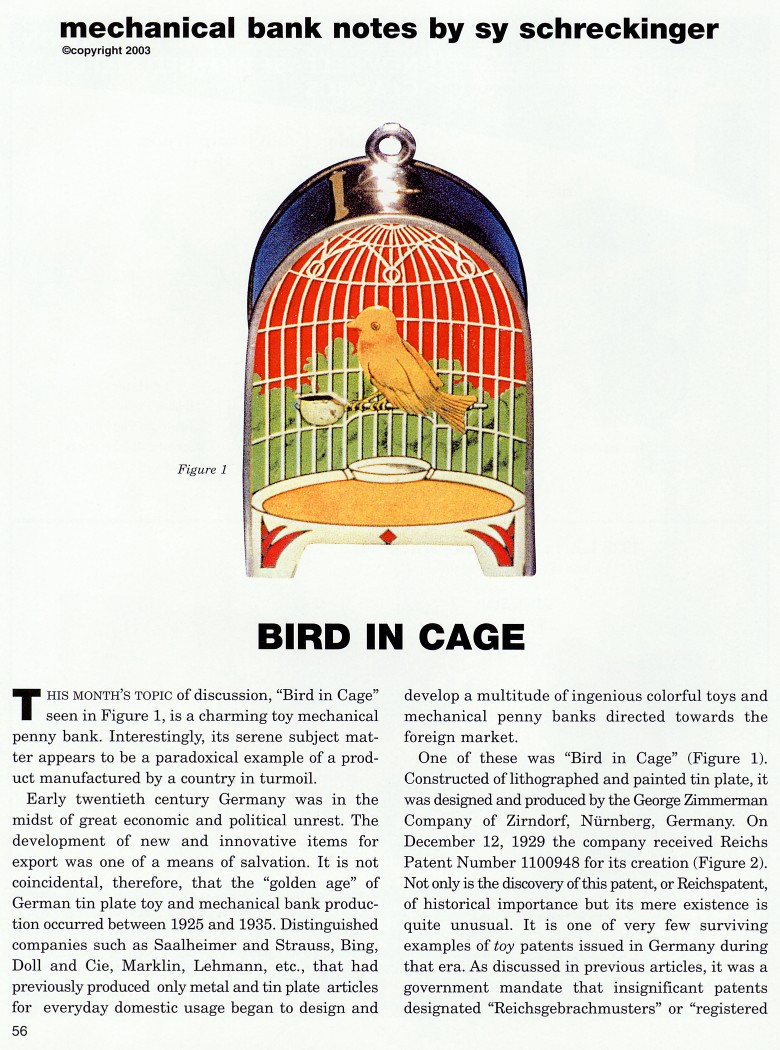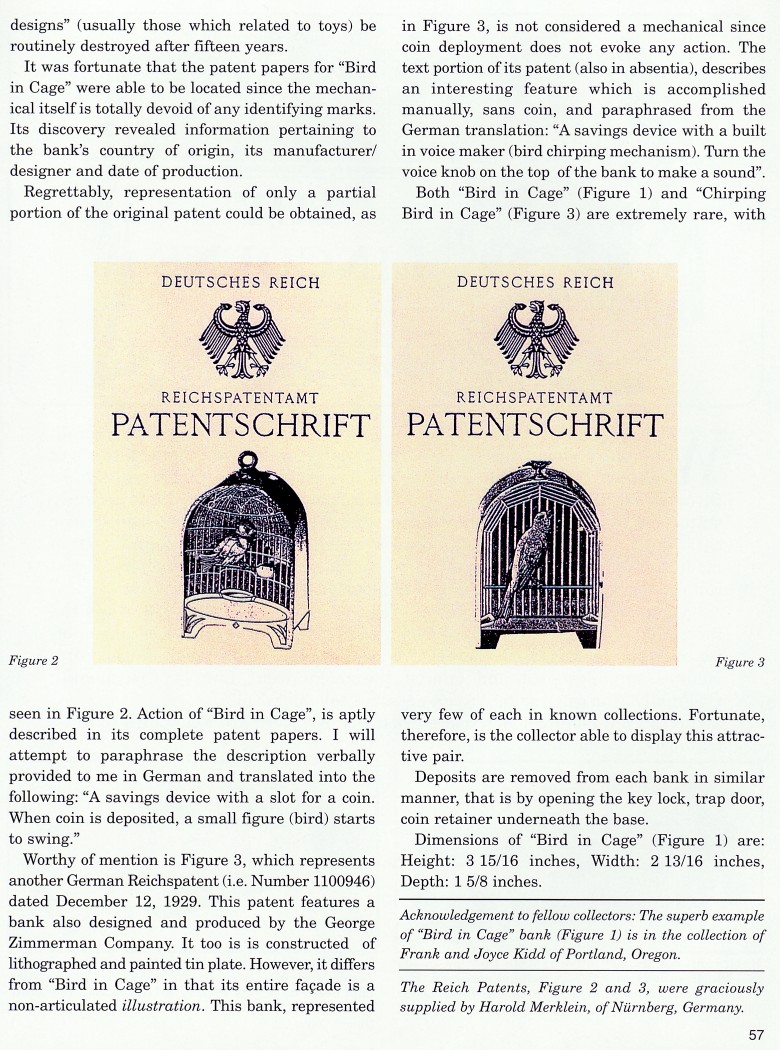|
Bird In Cage
by Sy Schreckinger – ANTIQUE TOY WORLD Magazine – January, 2003
This month's topic of discussion, "Bird in Cage"
seen in Figure 1, is a charming toy mechanical penny bank. Interestingly,
its serene subject matter appears to be a paradoxical example of a product
manufactured by a country in turmoil.
Early twentieth century Germany was in the midst of great economic
and political unrest. The development of new and innovative items for
export was one of a means of salvation. It is not coincidental, therefore,
that the "golden age" of German tin plate toy and mechanical bank
production occurred between 1925 and 1935. Distinguished companies such as
Saalheimer and Strauss, Bing, Doll and Cie, Marklin, Lehmann, etc., that
had previously produced only metal and tin plate articles for everyday
domestic usage began to design and develop a multitude of ingenious
colorful toys and mechanical penny banks directed towards the foreign
market.
One of these was "Bird in Cage" (Figure 1). Constructed of
lithographed and painted tin plate, it was designed and produced by the
George Zimmerman Company of Zirndorf, Nurnberg, Germany. On December 12,
1929 the company received Reichs Patent Number 1100948 for its creation
(Figure 2). Not only is the discovery of this patent, or Reichspatent, of
historical importance but its mere existence is quite unusual. It is one
of very few surviving examples of toy patents issued in Germany during
that era. As discussed in previous articles, it was a government mandate
that insignificant patents designated "Reichsgebrachmusters" or
"registered designs" (usually those which related to toys) be routinely
destroyed after fifteen years.
It was fortunate that the patent papers for "Bird in Cage" were able
to be located since the mechanical itself is totally devoid of any
identifying marks. Its discovery revealed information pertaining to the
bank's country of origin, its manufacturer/designer and date of
production.
Regrettably, representation of only a partial portion of the original
patent could be obtained, as seen in Figure 2. Action of "Bird in Cage",
is aptly described in its complete patent papers. I will attempt to
paraphrase the description verbally provided to me in German and
translated into the following: "A savings device with a slot for a coin.
When coin is deposited, a small figure (bird) starts to swing."
Worthy of mention is Figure 3, which represents another German
Reichspatent (i.e. Number 1100946) dated December 12, 1929. This patent
features a bank also designed and produced by the George Zimmerman
Company. It too is is constructed of lithographed and painted tin plate.
However, it differs from "Bird in Cage" in that its entire facade is a
non-articulated illustration. This bank, represented in Figure 3, is not
considered a mechanical since coin deployment does not evoke any action.
The text portion of its patent (also in absentia), describes an
interesting feature which is accomplished manually, sans coin, and
paraphrased from the German translation: "A savings device with a built in
voice maker (bird chirping mechanism). Turn the voice knob on the top of
the bank to make a sound".
Both "Bird in Cage" (Figure 1) and "Chirping Bird in Cage" (Figure 3)
are extremely rare, with very few of each in known collections. Fortunate,
therefore, is the collector able to display this attractive pair.
Deposits are removed from each bank in similar manner, that is by
opening the key lock, trap door, coin retainer underneath the base.
Dimensions of "Bird in Cage" (Figure 1) are: Height: 3-15/16 inches,
Width: 2-13/16 inches, Depth: 1-5/8 inches.
Acknowledgement to fellow collectors: The superb example of "Bird in
Cage" bank (Figure 1) is in the collection of Frank and Joyce Kidd of
Portland, Oregon.
The Reich Patents, Figure 2 and 3, were graciously supplied by Harold
Merklein, of Nurnberg, Germany.
|


